Artist Katherine Josten (founder/director of The Global Art Project for Peace) interviewed by Gil Dekel, PhD.
Gil Dekel: You have inspired more than 130,000 participants to take part in your project since 1994; how did you do that?…
Katherine Josten: I believe that everything takes place first on an inner level and then it manifests on an outer physical level – so I began by visualizing artists around the world creating, exhibiting and exchanging art for peace.
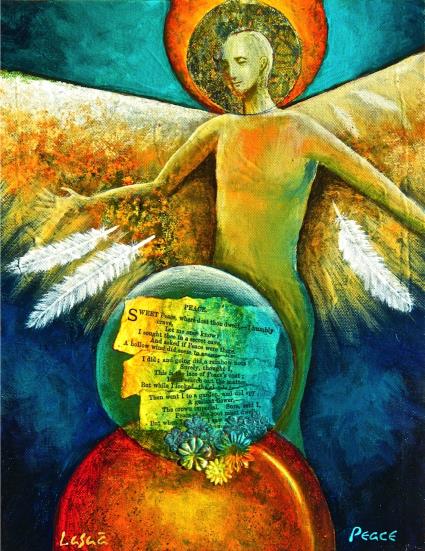
Figure X1: 'Peace' by George Herrick, The Global Art Project for Peace 2014.
I set the intention and put myself into alignment with a feeling that this project had already happened. I sent out an inner call, so to speak, to artists around the world. I often visualized participants as points of light that were all connecting up to illuminate the earth, and that their light sent out ripples of inspiration affecting others.
After doing this inner work, I began the outer work in 1993 by borrowing $1,500 from my parents to print banners and brochures, and I organised a celebration to introduce the Project to the local community in Tucson where I live. I also looked up the addresses of English language newspapers with the largest circulation in major cities throughout the world, including Public Broadcasting Service (PBS) radio stations.
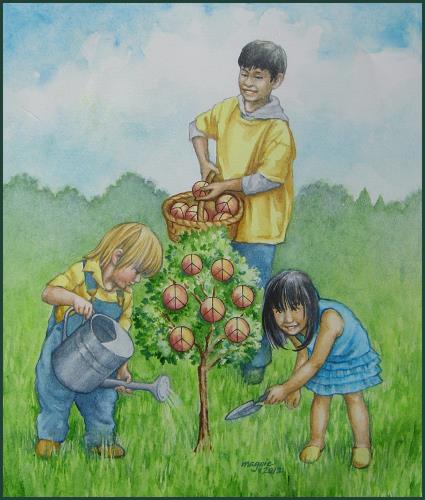
Figure X2: Untitled, by Maggie Huft, The Global Art Project for Peace 2014.
I wrote press releases, and mailed them out to about 100 newspapers. (In 1993 I didn’t yet have a computer, and the internet wasn’t yet in widespread use.) Articles began appearing in newspapers around the world, and I began receiving heart-warming letters from many different types of people of varying ages from many different places on the Earth. Many of the letters came with inspiring images because they came from creative people who operate from the heart.
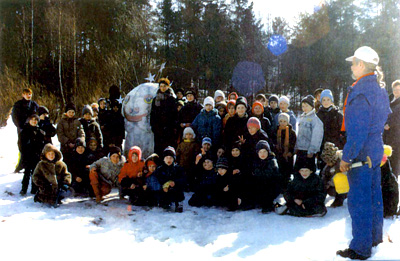
Figure 2: Participants of The Global Art Project for Peace 2000, Belarus. (Photo source: Stanislav Larchenko.)
In 2000 artists in Minsk, Belarus, with the direction of Stanislav Larchenko created art with children living in a sanatorium who were being rehabilitated from the Chernobyl disaster. Their art was titled ‘The Future in Children’s Eyes – Without Chernobyl and Hiroshima’. Here is a message I received from Stanislav:
“Every time my feelings become better when I receive your letter and learn that your project turned into reality and develops lucky. When I meet people building house of my dreams the world looks warmer and lighter. Some of Belarus artists and children share your ideas and will participate in GAP with great pleasure….”
3,600 people in nineteen countries created works of art for the first exchange in 1994. There were dozens of Global Art Project exhibitions, and many thousands of people had an opportunity to view these creative images of a world at peace.
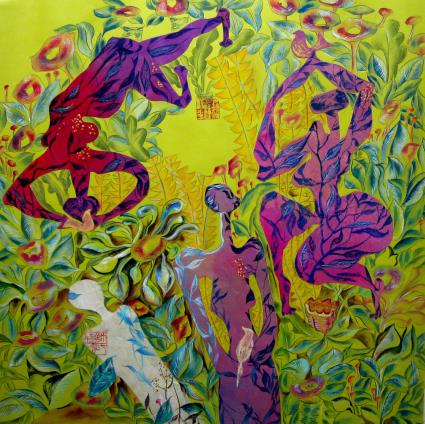
Figure X3: Untitled, by students and teachers at Chengdu Experimental School Chengdu, Sichuan, China, The Global Art Project for Peace 2014.
I was only going to do the Global Art Project exchange once. It was a difficult decision to do the exchange again. The first one had left me depleted emotionally and financially – I didn’t know how I could possibly do this to myself again. But when the incredibly heart-warming, inspiring images and letters began pouring in, it seemed I really had no choice. Most of the really hard part had already been done. It was set in motion. And now there were people around the world who wanted to help. I was so deeply moved and my soul was so nourished by the artworks and beautiful words expressing how participating in the Project had affected individuals and communities. Doing the Project again felt so right… my soul work.
What is the benefit for people creating art works expressing visions of global peace?
Creating art is just the first phase of participating in the Global Art Project for Peace. There are three phases. Participants first create an artwork; they then share it in their local community, and finally, they exchange their art with a person or group in another location. I believe that doing so, we heal on all levels: personal, community and global.
An artwork cannot be created without first feeling it inside. The Personal Healing begins by going within to create a personal vision of peace. Participants must first do the inner work of believing that peace is possible and removing any resistance to that belief. This can be the most difficult part… particularly if there is a great amount of conflict within, or at home, or in the communities. Participants must consciously make a shift within themselves by releasing feelings and images of conflict, and shift into an inner place where they can imagine peace; generating a feeling of resolution to conflicts, and feeling it within themselves.
Community Healing happens when individuals or groups join together to create their artwork. This gives community leaders and teachers an opportunity to facilitate the sharing and discussion of ideas for peace. After completing their art, individuals and groups share their art with their local community during the first three weeks of April. The art could be displayed or performed at museums, in schools, in a hospital, a public library, gallery, bank, park, a restaurant – wherever people feel comfortable sharing their personal visions.
Global Healing occurs during the last week of April, when art is sent to an individual or group in another location. Sending the art to a stranger is a tangible act of unconditional love and generosity. The art that is received is exhibited to give local people an opportunity to experience diverse visions of peace from around the world. This acts as a stimulus to learn about other cultures and discuss alternative ways of experiencing the world.
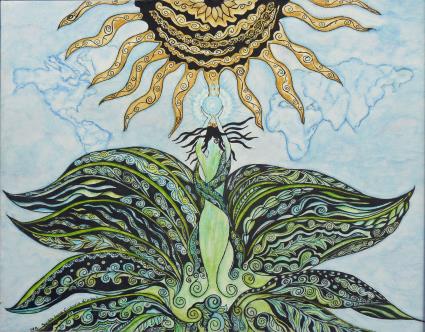
Figure X4: Untitled, by Sandra Kimball, The Global Art Project for Peace 2014.
The visions of peace created by thousands of participants simultaneously encircle the earth. It’s exciting to imagine the power of all that combined energy focused on the intent of creating a peaceful future. Participants engage their imaginations to focus on the world they wish to create. As a global community we have great power as we work together towards healing and peace.
What do you mean by the term ‘We Are All One’? You were also talking about ‘energy divided’, and ‘threads that need to turn back to a cloth’…?
We’ve been seeing the world and interacting with it using only our outer senses, which makes it appear that everything is separate. It’s time to begin using our inner senses too. When we use our inner senses it becomes apparent that everything is connected and what we do affects all other beings that share our world. When we have that inner knowing, it affects the way we think and act.
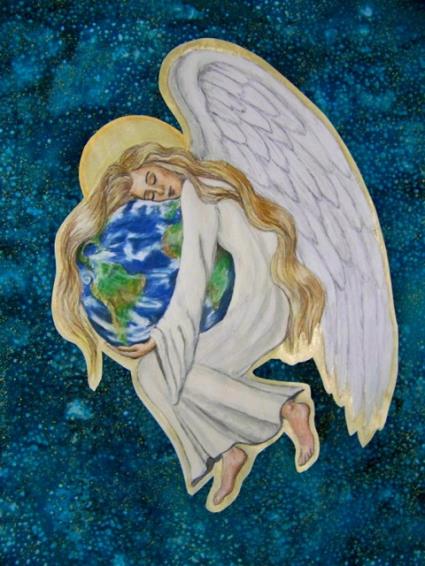
Figure X4: 'Earth Angel', by Margot Slowick, The Global Art Project for Peace 2014.
You have spoken about an out-of-body experience in your early 20s, where you entered a vortex of energy and came out in another dimension.
Yes. I’ve had mystical or peak-experiences since childhood. I’ve always considered them to be lessons about reality that I’m being given. The out-of body experience that precipitated my artwork, Origins, was one of the most intense of these experiences. One day I was up very late contemplating the big question, ’Who Am I’. I started hearing a shrill ringing in my ear. Because it was much louder and more intense than a normal ringing, I knew that something was going to happen so I went into the bedroom and lay down on my bed. As soon as I did, my consciousness started going down into a powerful, swirling vortex of energy. It felt like being in the centre of a tornado. I was terrified, because I knew that I was leaving this dimension and I was afraid that I wouldn’t be able to come back. My fear brought me out of the experience. I thought, ’If this happens again, I’ve got to have the courage to go with it because I could learn something.’
Sure enough, the next night it happened again. This time it lasted a little longer but the energy was so powerful that my fear took over again. The third night I was able to control my fear and allow my consciousness to go down into the swirling vortex. I gave a mental call for help and when I did, I suddenly found myself speeding through space. All of my senses were heightened far beyond what I knew to be possible. That was just the beginning of the experience.
The awareness that I received from that experience was so multi-dimensional and experiential that it is difficult to put into linear words. It gave me an experiential awareness that everything is connected; that we are far more than our physical bodies; and that our consciousness has the ability to transcend time and space. We are all one; there is no death; we are not alone.
It took twelve years of creating the artwork I titled Origins, (an installation involving my poetry, paintings and sculpture that work together as a whole) to express even a portion of the knowings that I experienced. I used the form of art to convey the ideas because art is a multi-dimensional medium, capable of expressing and touching others on many simultaneous levels of awareness. Through doing the artwork I could continue to have such experiences and have a form to share my discoveries. I create art as a means to experience and share intimate, personal revelations concerning the nature of reality.
When I exhibited my art, I would often give presentations in which I would read the poetry that is part of Origins and talk about many of the mystical or peak-experiences that I had while creating the art. These presentations were popular because many people have such experiences but often they fear speaking about them. I was willing to say publicly that I have these experiences and they contain important lessons concerning reality.
Many people in our culture view reality through only their outer physical senses, which makes it appear as if there are divisions between objects. They are unaware of the underlying reality that can be accessed using their inner senses.
The Global Art Project started as an idea in your mind. What made you want to go and make this idea a reality?
While creating my art Origins I was led through inspiration. I learned early on through my artwork to trust my inspiration and go with it. And I also learned early on that if I don’t follow my inspiration, it’s going to keep bugging me and not let go of me until I just do it. And that’s how the Project developed. It wasn’t that I thought out that this was a logical next step… but rather I received the inspiration to create the Global Art Project as the next step of Origins. So I did it.
I think it’s important to mention that before receiving the inspiration, I had previously set an intention to be of service.
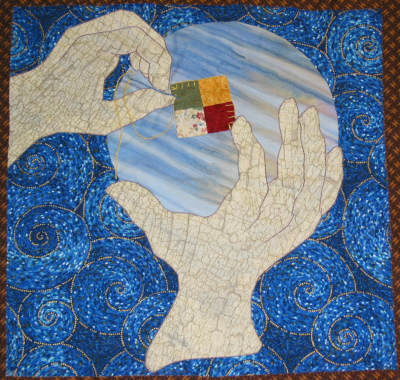
Figure 10: A quilt block by Barbara Pearson (from ‘Peace Quilt’ by members of the Red Hummingbird Society), The Global Art Project for Peace 2004.
I received the initial inspiration in 1991 but it took about two years from the inception of the idea to hone it down to its final form. It needed to be simple enough that anyone, anywhere could participate; and yet profound enough to express the idea, we are all one. And, since we’re all one, all the people around the world who are creating art for the Global Art Project are an extension of my own artwork out into the world. It’s as if the theoretical and philosophical concepts of Origins became too large to be contained in one installation… they needed to be expressed out into the world. They needed to be made physically real.
One participant wrote that when people are holding hands, they cannot fight. Do you think it is ‘natural’ for people to fight?
I think that physical fighting comes from a lack of the awareness that we are all one energy… which, again, comes from a lack of inner perception. With inner awareness, it is obvious that when we harm another, we are actually harming ourselves; there is no division.
In the midst of the news of wars, I hope that the Global Art Project for Peace has brought some light of hope and inspiration. The thousands of artworks created have touched the hearts and consciousness of the many people who have experienced them. I feel that these artworks are seeds to help birth a new vision of a healthy way of life.
Seeding the future with visions of peace and love is important work. I can only wish that the work of the Global Art Project will flower to enrich and surpass even our most glorious visions of peace on Earth!
22 July 2011. Last update 11 Dec 2014.
Text © Katherine Josten and Gil Dekel. Images © Katherine Josten. Interview conducted via email correspondence March-July 2011. Katherine is based in The USA. Dr. Gil Dekel is based in the UK.
Katherine’s website: www.globalartproject.org

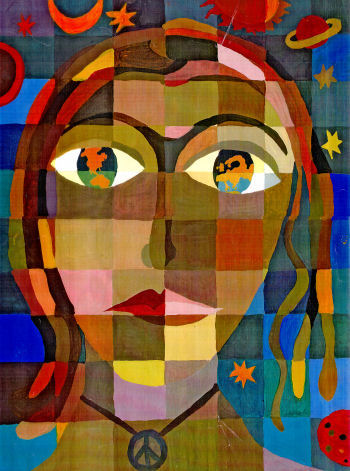
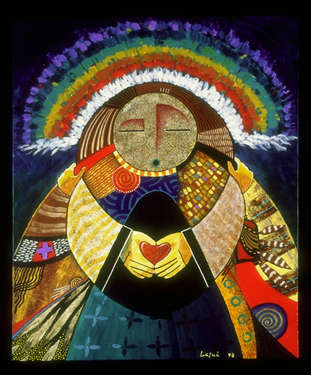
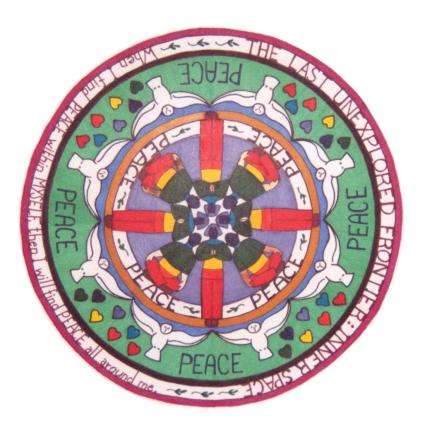
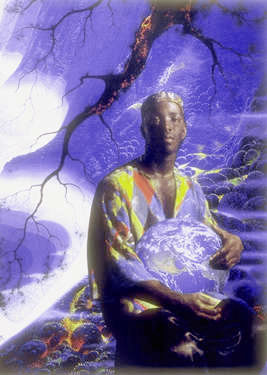
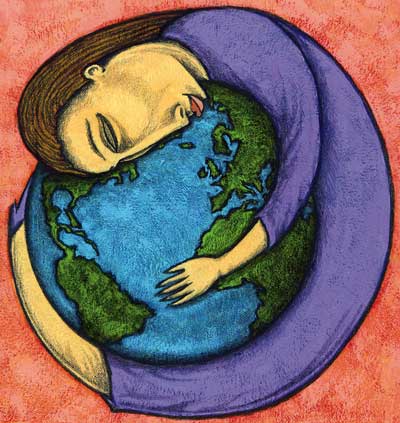
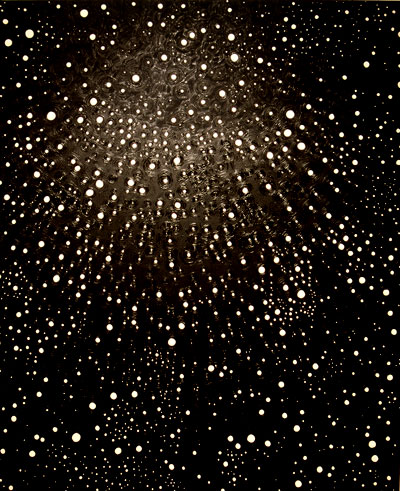
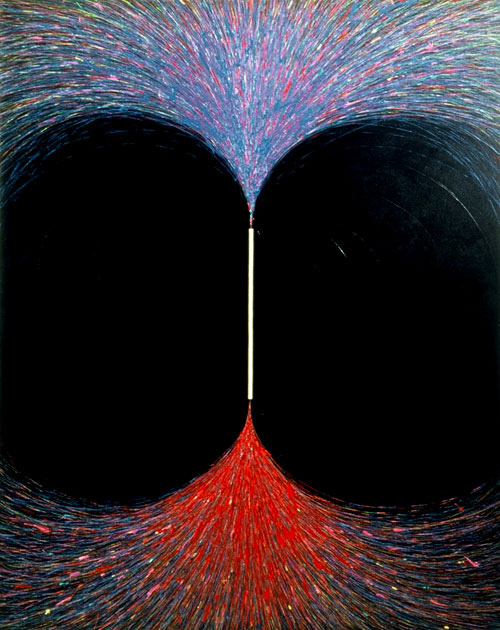
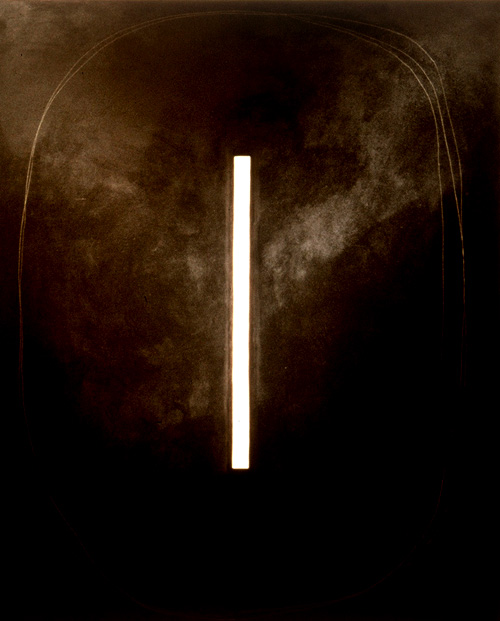
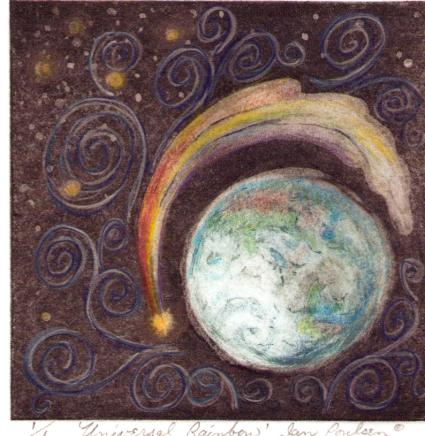
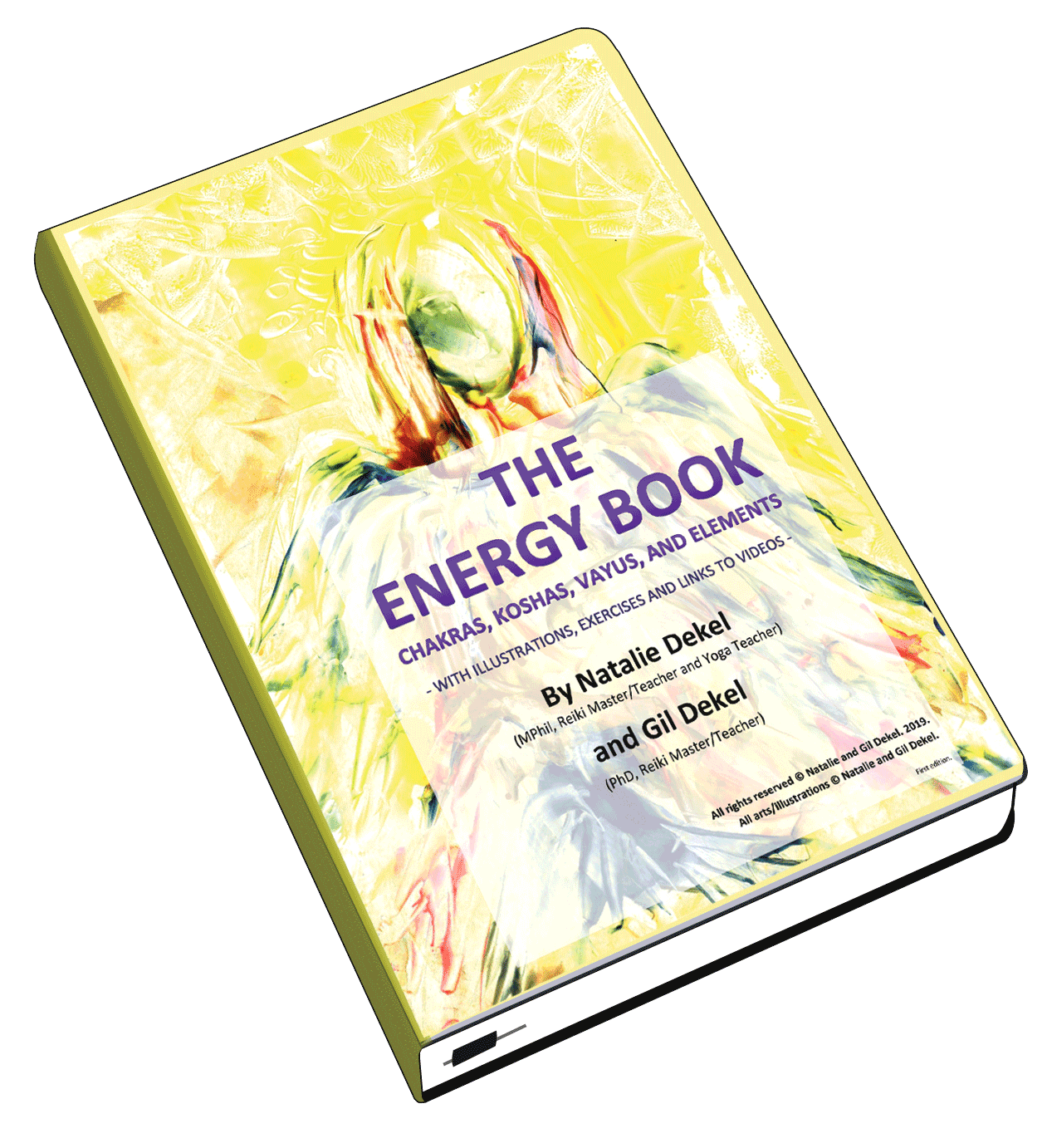
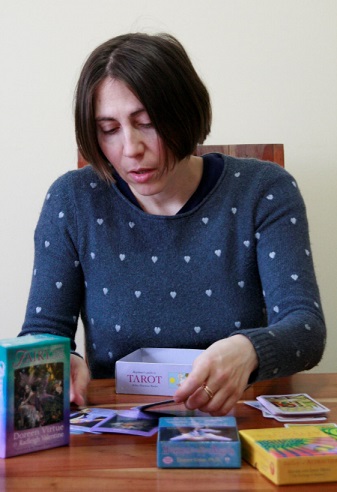 - Reading with Natalie, book here...
- Reading with Natalie, book here...